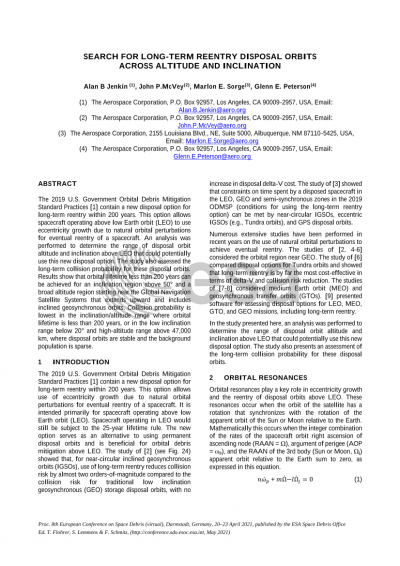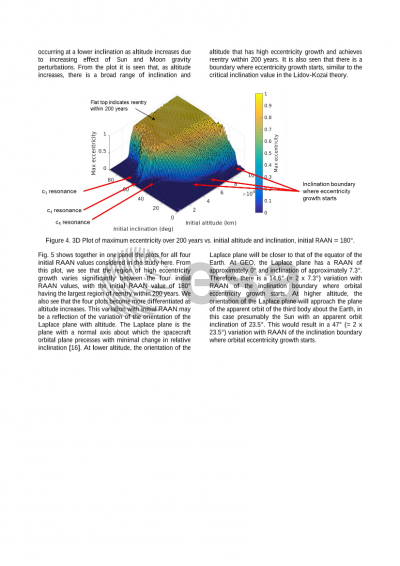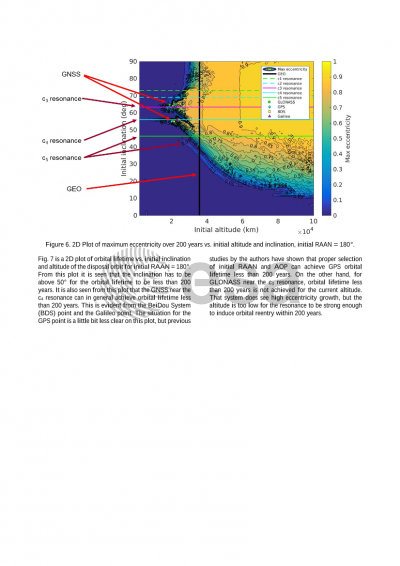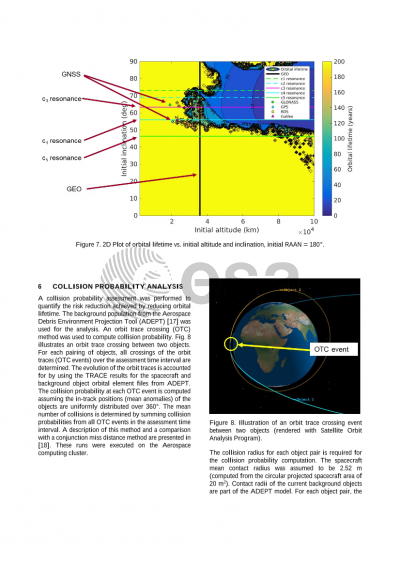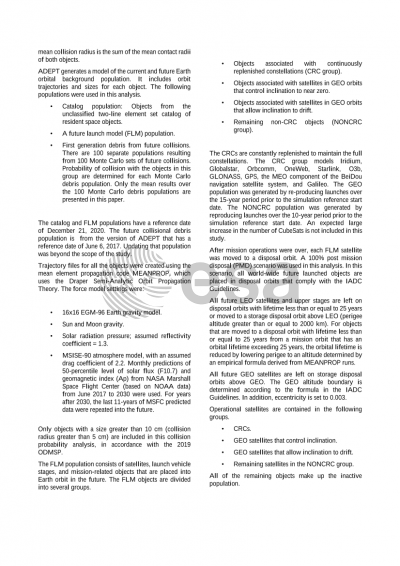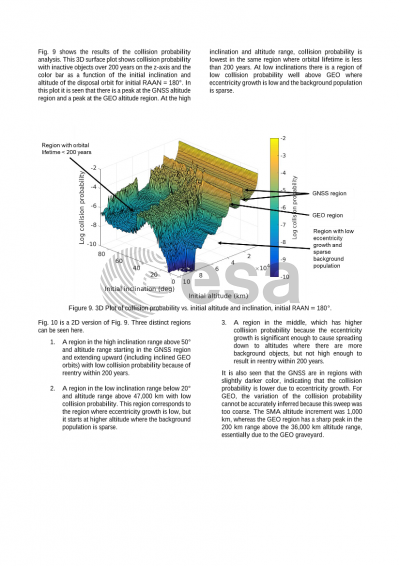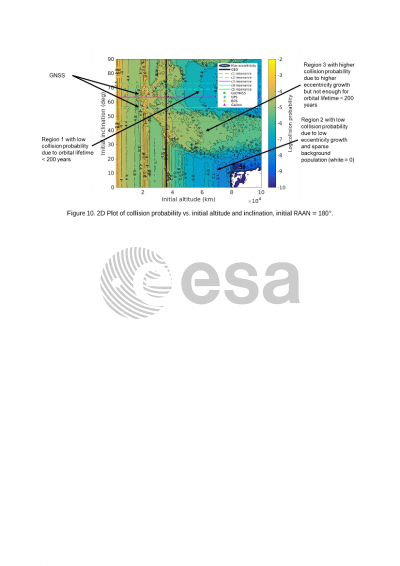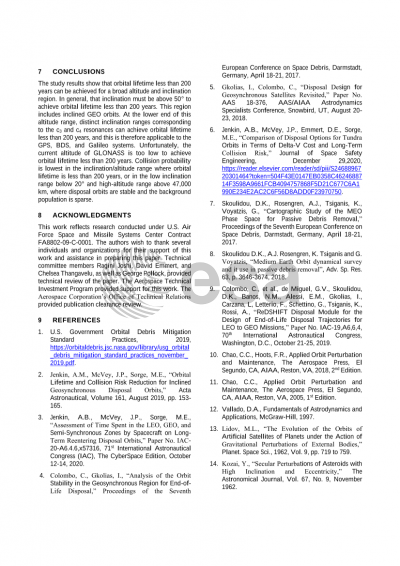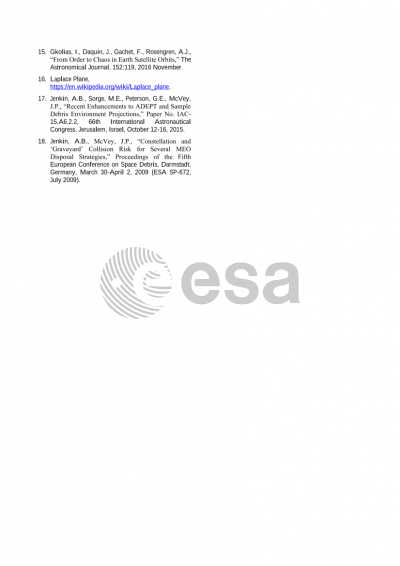Document details

Abstract
In the 2019 update to the U.S. Government Orbital Debris Mitigation Standard Practices (ODMSP), the upper limit on disposal orbit lifetime for most spacecraft undergoing uncontrolled reentry is 25 years. However, the 2019 ODMSP disposal options also include use of orbital eccentricity growth due to natural perturbations to induce long-term reentry, i.e., after 25 years. The new disposal option is intended primarily for disposal of spacecraft operating above low Earth orbit (LEO) and serves as an alternative to the historical practice of leaving spacecraft above LEO on stable or long-lived storage (graveyard) disposal orbits. This new option can reduce overall collision probability and associated growth of the future debris envi-ronment, even when orbital lifetime is greater than 25 years. To use this option, the following constraints must be satisfied:
1. The orbital lifetime is no more than 200 years.
2. The cumulative time spent by the spacecraft in any one of three altitude zones is less than 25 years: the GEO zone (GEO +/- 200 km, occupied by operational GEO spacecraft), the LEO zone (altitude range up to 2000 km, the most densely populated Earth orbital region), and the MEO zone occu-pied by operational GPS spacecraft (GPS +/-300 km).
3. The probability of collision with objects of size 10 cm and larger is less than 0.001.
4. The reentry debris casualty area is less than 7 m2 or the human casualty risk is less than 0.0001. This last constraint is dependent on the design of the spacecraft and will not be considered in this paper.
Previous studies of orbits that could satisfy constraints 1-3 have focused on inclined geosynchronous orbits (IGSOs). The authors of this paper have performed several previous studies of Tundra orbits, which are moderately eccentric IGSOs. These studies have shown that, for all values of disposal orbit initial right ascension of ascending node (RAAN), there is a range of initial inclinations that have orbital lifetime less than 200 years, the lowest value of inclination being approximately 50°. Previous studies have also shown that GNSS disposal orbits can be configured to have orbital lifetime less than 200 years.
The study presented here is a broader search of disposal orbits that could use the ODMSP long-term reentry option. It focuses specifically on a sweep of disposal orbit initial altitudes above low Earth orbit (LEO) and of initial inclinations. The sweep is repeated for several values of RAAN and eccentricity. The paper will present orbital lifetime vs. initial SMA altitude and inclination. Variation of cumulative time spent by a disposed spacecraft in the LEO, GEO, and MEO GPS zones will be presented. Collision risk between a disposed spacecraft and background population objects of size 10 cm or larger will be determined using the Aerospace Debris Environment Projection Tool suite. Results will show the range of disposal orbits over SMA-altitude and inclination that comply with constraints 1-3 of the long-term reentry option in the 2019 ODMSP.
Preview
